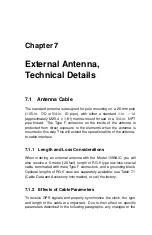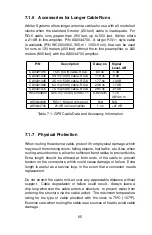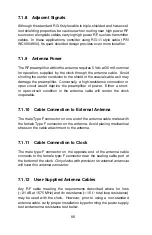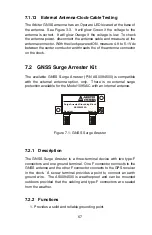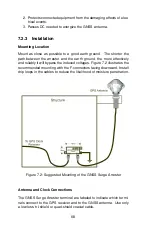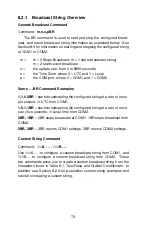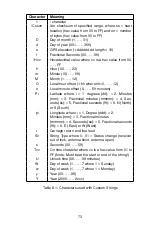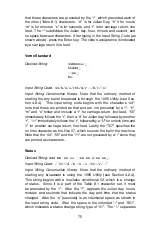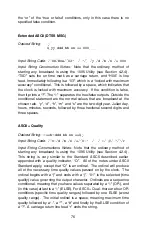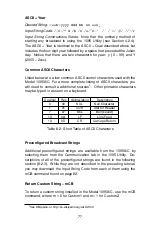
ASCII + Year
Desired String:
<
soh
>
yyyy ddd:hh:mm:ssQC
Input String Code:
/T01/Y d:/h:/m:/s/{01? /:./:
∗
/:
#
/;?/}/r
Input String Constructions Notes:
Note that the ordinary method of
starting any broadcast is using the 1095 Utility (see Section 4.2.4).
The ASCII + Year is identical to the ASCII + Qual described above but
includes the four-digit year followed by a space that preceded the Julian
day. Notice that there are two characters for year: y (0 – 99) and Y
(2000 – 2xxx).
Common ASCII Characters
Listed below are a few common ASCII control characters used with the
Model 1095A/C. For a more complete listing of ASCII characters, you
will need to consult a additional sources
. Other printable characters
may be typed in as seen on a keyboard.
Decimal
Hex
Abbreviation
Description
0
00
NUL
Null Character
1
01
SOH
Start of Header
7
07
BEL
Bell (sound)
10
0A
LF
Line Feed
13
0D
CR
Carriage Return
Table 8.2: Short Table of ASCII Characters
Preconfigured Broadcast Strings
Additional preconfigured strings are available from the 1095A/C by
selecting them from the Communication tab in the 1095 Utility. De-
scriptions of all of the preconfigured strings are found in the following
section (8.2.3). While they are not described in the preceding tutorial,
you may download the Input String Code from each of them using the
mCB command found on page 82.
Return Custom String – mCB
To return a custom string installed in the Model 1095A/C, use the mCB
command, where m = 0 for Custom1 and m = 1 for Custom2.
1
See Wikipedia, at http://en.wikipedia.org/wiki/ASCII
77

